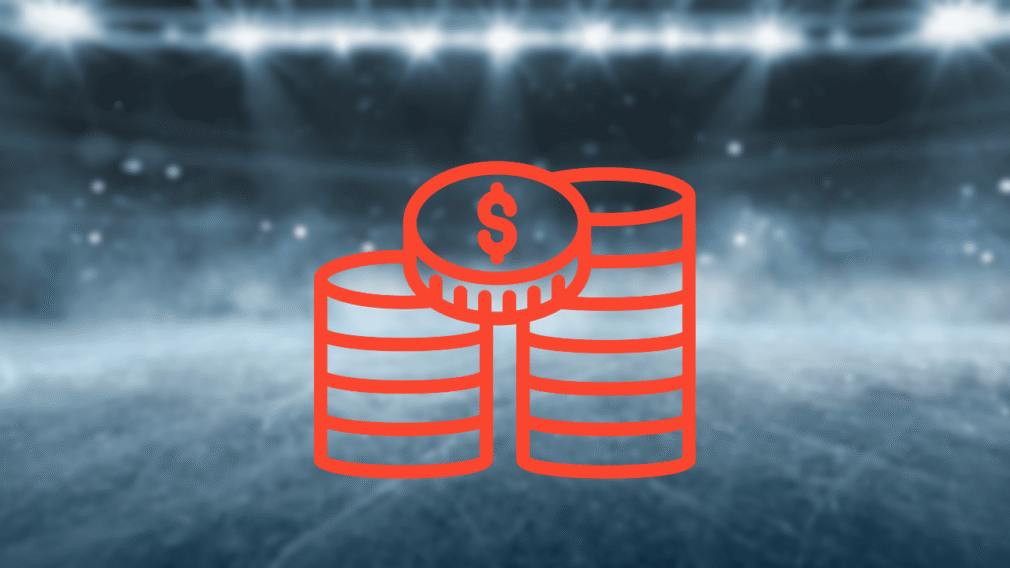Top Bet Types in NHL Hockey: Moneyline, Puck Line, and More
Betting on NHL hockey offers a thrilling mix of simplicity and complexity, driven by the sport’s low-scoring nature and intense schedule. Unlike basketball or football, NHL games are often decided by a single goal, making the value you get on a wager highly important.

Core Game Wagers (Sides and Totals)
These are the most common bets placed on any single NHL matchup.
Moneyline (Outright Winner)
The Moneyline is the simplest NHL wager: you are betting on the team that will win the game outright, including overtime and the shootout.
Odds Format: Favorites are marked with a minus sign (–); underdogs with a plus sign (+).
- Example: Bruins –175 vs. Stars +155. A bet on Boston wins ; a bet on Dallas wins if Dallas wins.
Strategy Tip: Because roughly half of all NHL games are decided by one goal, Moneyline odds are generally closer than in higher-scoring sports. Betting on undervalued underdogs can be more profitable in the NHL over the long term, as upsets occur frequently.
60-Minute Line: Some sportsbooks offer a “three-way moneyline” or “60-minute line,” which excludes overtime and shootouts. This offers a third outcome: Tie (often at higher odds).
Puck Line (The Spread)
The Puck Line is hockey’s point spread, fixed almost universally at goals. It adjusts the payout for the risk of a close final score.
Favorite (): The favorite must win by two or more goals to cover the spread.
Underdog (): The underdog wins the bet if they win the game outright or lose by only one goal.
- Example: Betting Boston might pay (higher than their Moneyline price). This bet wins only if Boston wins 3-1, 4-2, etc.
Strategy Tip: The Puck Line is popular because it boosts the payout on favorites whose Moneyline price is too steep. It is essential to account for empty-net goals (ENGs): a trailing team pulls their goalie late, often resulting in an easy empty-net goal for the leading team, which frequently covers the spread.
Totals (Over/Under)
You are wagering on the combined number of goals scored by both teams, including goals scored in overtime/shootout (unless specified otherwise).
Line Stability: NHL totals commonly range between and goals. Because scoring is low, sportsbooks often adjust the Juice (odds) instead of moving the line itself.
- Example: Over goals at vs. Under goals at . A final score of (7 goals) wins the Over.
Strategy Tip: Goals in hockey are unpredictable. Successful totals bettors focus on goaltender form, team Power Play/Penalty Kill efficiency, and fatigue (Under bets often hit during back-to-back games).
Specific In-Game and Short-Term Wagers
These markets allow bettors to capitalize on specific players, periods, or unique game situations.
Player and Team Prop Bets
Proposition bets (Props) are wagers on an event within the game that is not dependent on the final score.
Player Props: Focus on individual performance metrics. These are extremely popular and often offer good value early in the season.
- Goals/Points: Will Connor McDavid score Over 0.5 Goals?
- Shots on Goal (SOG): Will Quinn Hughes record Over 2.5 Shots on Goal? SOG volume is a key indicator for sharp prop bettors.
- Goalie Props: Total Saves (Over/Under) for the starting netminder.
Team Props: Wagers on single-team totals (e.g., Team A Total Goals Over 3.5, or Team B Total Shots on Goal).
Strategy Tip: Focus on player volume (consistent shots on goal, top line and Power Play usage) rather than just favorable matchups. Oddsmakers often inflate the odds on the “Over” for popular star players (like Auston Matthews or Nathan MacKinnon), creating potential value on the “Under” in tight-checking games.
Period Betting
These wagers apply the Moneyline, Puck Line, or Total only to a single 20-minute period.
- Puck Lines: Lines shorten to goals. Betting a team in the first period simply means they must have a lead after 20 minutes.
- Totals: Lines are small, usually goals for the period. Betting the Over means you need at least two goals scored in that period.
- Use Case: Ideal for isolating starting goalie performance or capitalizing on teams known to be fast starters or slow finishers.
Live (In-Play) Betting
Live betting allows wagers to be placed after the game has started. Odds update instantly based on the score, penalties, and game momentum.
- Wagers: Next Goal Scorer, Next Penalty, Adjusted Puck Line, and Revised Total for the remainder of the game.
- Strategy Tip: Use the stability between periods to place bets, as odds can be volatile during play. Live betting is useful for hedging a pre-game pick that is going poorly or for catching a shift in momentum before the sportsbook fully adjusts the odds.
Long-Term and Novelty Wagers
These markets tie up your money for an extended period but offer the highest potential returns.
Futures Bets: Wagers on season-long outcomes, such as the Stanley Cup Champion (e.g., Florida Panthers at ), Division or Conference winners, or individual player awards (Hart Memorial Trophy, Vezina Trophy).
Strategy Tip: Place Futures bets early in the season to get the best odds. The payout is very high because predicting a winner months in advance is extremely difficult.
Parlays and SGPs: A Parlay combines multiple selections, requiring all legs to win. Same-Game Parlays (SGPs)combine multiple wagers from a single game.
- Risk/Reward: Parlays multiply the odds for a massive payout but are high-risk. Recreational bettors love them; sharps use them sparingly due to the high house edge.
Grand Salami: A unique Over/Under bet on the combined goal total for every single NHL game played across the entire daily slate. This is a high-variance, novelty wager.
Key Differences (NHL vs. Other Sports)
Recommended
